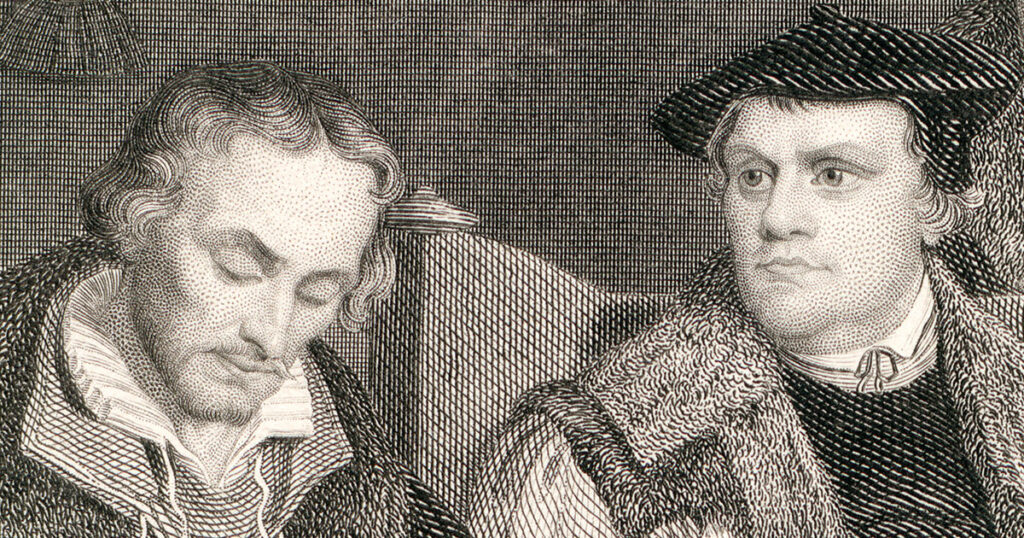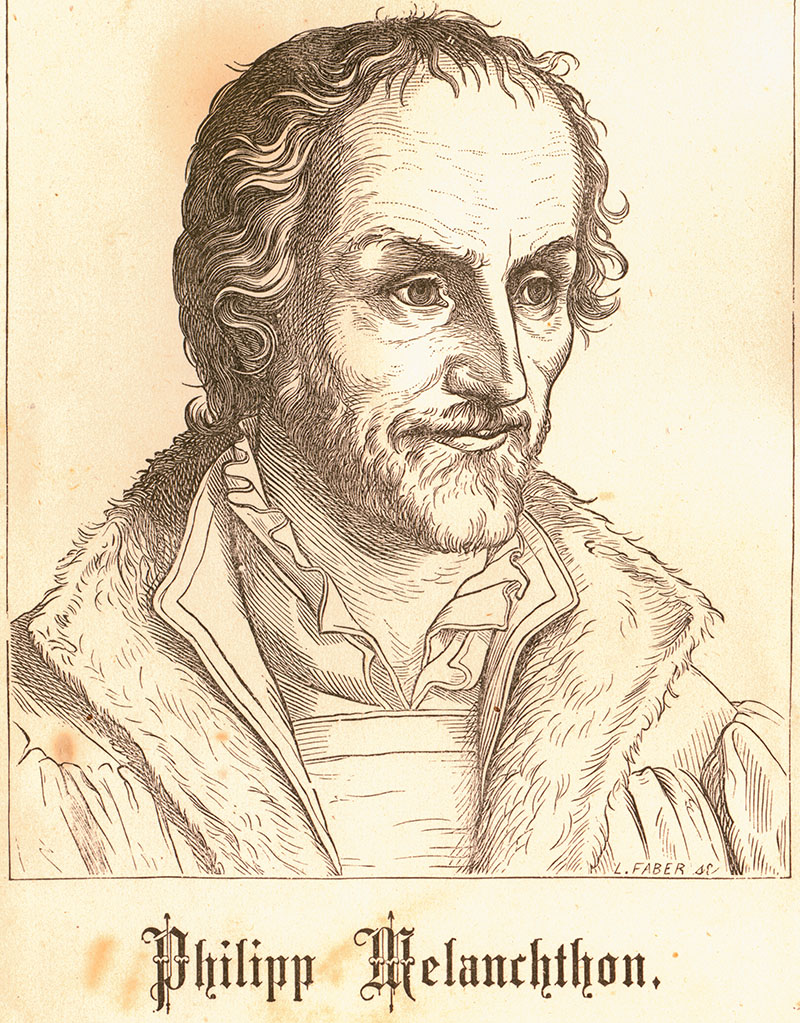
Philipp Melanchthon (left) and Rev. Dr. Martin Luther (Courtesy of the Concordia Historical Institute Collection)
By Dr. Jack Kilcrease

Philipp Melanchthon composed the Augsburg Confession in preparation for the Diet of Augsburg in 1530. The emperor Charles V called the diet in order to resolve the religious issues that divided the empire. He sought unity in order to be able to present a united front against the armies of the invading Turks.
In composing this confession of faith, it was the goal of Melanchthon and the other Lutherans to give a full account of the teachings of the Lutheran Reformation before the emperor. In describing the faith of the Lutheran Church, Melanchthon drew on a series of earlier documents.
The first of the documents that Melanchthon drew upon was the Schwabach Articles of 1529. At the second Diet of Speyer in 1529, the emperor Charles V reaffirmed his commitment to enforcing the Edict of Worms of 1521. This edict condemned Luther and banned Lutheranism within the Holy Roman Empire. The evangelical princes protested this decision, thereby earning them the name “Protestant.”
Immediately after the diet, one of the most prominent Lutheran princes, Philipp of Hesse, made overtures to Saxony and other German regions that had adopted the Reformation that they should form a military alliance to defend themselves against Charles.
Elector Johann of Saxony presented the idea to Luther and Melanchthon, who in turn stated that if a military alliance was created it would only be accepted if the members could agree to a common confession of faith.
For this reason, in late October of 1529, 17 articles (composed earlier in Wittenberg by Melanchthon and Luther) were presented at Schwabach in the county of Brandenburg-Ansbach as a possible common confession of faith for a future military alliance.
It should be noted that when this military alliance (known as the “Smalkaldic League”) eventually materialized, it was only comprised of Lutheran princes. This was in spite of the fact that in the wake of the second Diet of Speyer, Philipp of Hesse had attempted to expand the alliance to also include the nascent Reformed Churches of southern Germany.
The main barrier to this alliance was the bitter dispute between Luther and the Zürich reformer, Ulrich Zwingli. Whereas Luther believed that Christ’s body and blood were truly and substantially present in the Lord’s Supper, Zwingli had argued that the bread and wine were mere symbols.
Still, other southern German Reformers (notably Martin Bucer) believed that Christ was at least spiritually present in the Lord’s Supper for believers.
In order to smooth out these theological differences and form a common military alliance with the southern German cities, Philipp of Hesse called the leading Wittenberg and southern German theologians to Marburg Castle in early October 1529.
After roughly two days of debate, there was no resolution to the issues. Luther made many strong arguments, but Zwingli and the southern Germans would not yield.
In spite of this, Luther wrote up a common confession of faith encompassing thirteen articles of agreement, while noting in a 14th article that they still did not agree on the Lord’s Supper. Regarding this remaining unresolved issue, both sides agreed to continue to study the issue and pray for unity. This document, known as the Marburg Articles, served as yet another source of the Augsburg Confession.
Lastly, in January of 1530, Charles V issued an edict calling for an imperial diet at Augsburg in April of the same year. This edict was received by Elector Johann on March 11 and he directed Luther, Melanchthon, Justus Jonas, and Johannes Bugenhaugen on March 14 to meet in Torgau to write up a series of articles that could be used as a confession of faith before the Diet of Augsburg.
After the 18th century, these articles have come to be known as the “Torgau Articles.” Although there is some dispute as to which document constitutes this confession, it is generally agreed that the text of these articles is one source of the completed Augsburg Confession.
It is very important to recognize that many different theologians contributed to the public confession of the Lutheran Church. Instead of allowing the teaching of a single charismatic leader to define the faith of their church (as many in American Christianity have), the Lutherans of the sixteenth century understood their faith as something confessed together as the Church.
Therefore Melanchthon honored the voices of a number of different theologians in composing his great confession.
Jack Kilcrease is a member of Our Savior Lutheran Church in Grand Rapids, Mich.